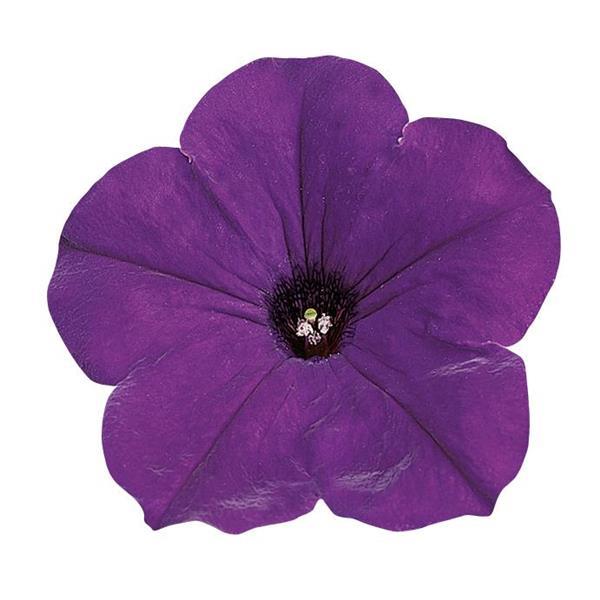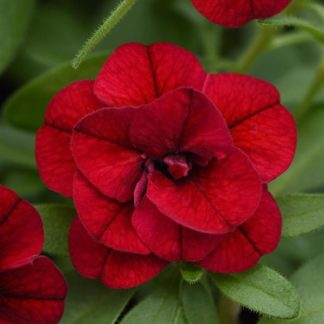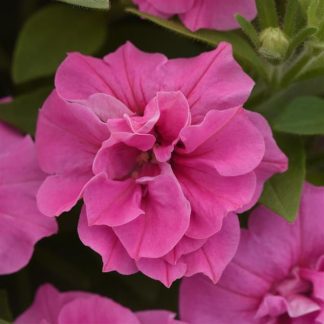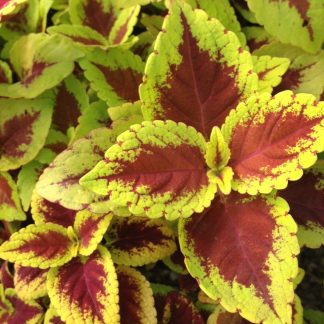Description
Easy Wave Blue Petunia: Your Breezy Path to Oceans of Color
Welcome Aboard
Imagine a fresh morning. You step outside. A soft blue tide of blossoms washes over your patio, porch, or garden bed. That gentle swell comes from Easy Wave Blue petunia. This spreading, fast-flowering petunia paints the world in vivid sky tones from spring’s first warm week until frost whispers its last goodbye. Today we will explore everything you need to know—what it looks like, how it grows, and how you and I can keep it happy all season. Grab a cool drink. Let’s dive in together.
Getting to Know Easy Wave Blue
A Quick Portrait
- Color: Rich sapphire buds open to a clear blue-purple face with just a hint of lavender. In morning light the petals glow like sunlit water.
- Habit: A low, mounding center spills into wide, graceful arms. Plants reach 6–12 inches tall but can spread 30–40 inches in every direction.
- Texture: Velvety petals rest on tidy green foliage. Leaves stay neat because blossoms “self-clean.” Spent blooms drop away on their own.
- Bloom Time: Early spring right through early winter in mild regions. No dramatic pauses. Only constant color.
The Genetics Behind the Glow
Easy Wave petunias come from years of careful breeding. Botanists crossed classic grandiflora types with spreading “wave-style” parents. Their goal? Huge color, compact branching, and almost no fuss. Easy Wave Blue meets that promise. Each plant branches freely, creating hundreds of growing points. More branches mean more flowers—fast.
Design Possibilities
Because Easy Wave Blue hugs the soil yet flows outward, you have choices:
- Hanging baskets: Let shoots drape up to three feet.
- Window boxes: Fill the whole box with a single plant for maximum impact.
- Groundcover: Edge a sunny path with an oceanic ribbon.
- Mixed pots: Pair with chartreuse sweet potato vine or soft silver licorice plant for bright contrast.
Why We All Fall in Love with Easy Wave Blue
Constant Performance
You and I both crave reliable plants. Easy Wave Blue answers. It begins blooming three to four weeks earlier than many seed petunias. Once in gear, it never looks tired. That steady rhythm keeps your beds bright during family cookouts, holiday weekends, and every ordinary Tuesday in between.
Carefree Spirit
Deadheading? Only if you want to. Pruning? Rarely needed. This variety sheds old petals automatically, then pushes out new buds overnight. Its self-reliant nature gives us more time to sip lemonade and watch butterflies.
Pollinator Magnet
Bees see the ultraviolet glow in blue and purple petals. As a result, Easy Wave Blue becomes a busy landing strip for pollen-seekers from dawn to dusk. By growing it, we feed pollinators while beautifying our space.
Planting for Success
Timing Our Start
- Seedlings or plugs: Plant outdoors when nights stay above 55 °F (13 °C).
- Seed sowing: Indoors 8–10 weeks before your last expected frost. Provide bright light and gentle airflow.
Choosing the Perfect Spot
Sun drives flower power. Aim for six or more hours of direct light. In hotter regions we can tuck baskets where they catch morning sun and afternoon shade. That little break protects petals from scorch.
Soil Secrets
- Drainage: Petunias dislike soggy feet. A raised bed or container with drainage holes is ideal.
- Richness: Mix two parts high-quality potting mix with one part finished compost. The organic matter feeds roots and holds moisture without waterlogging.
- pH sweet spot: 6.0–6.5. Slightly acidic keeps nutrients open for business.
Spacing and Depth
Set plants so the top of the root ball sits level with surrounding soil. Space 18 inches apart in the ground. In baskets, allow 1–3 plants for every 12 inches of basket diameter, depending on the lushness you want.
Everyday Care Guide
Watering Wisdom
Instead of following a rigid schedule, check moisture by touch. Stick one finger 1 inch down. Is it dry? Time to water. Aim for a deep soak until water flows from the pot’s drain holes. Morning watering lets leaves dry before night, reducing disease risks.
Feeding for Waves of Flowers
These energetic growers burn through nutrients fast. Let’s feed them well:
| Stage | Fertilizer Type | Frequency |
|---|---|---|
| Planting | Balanced slow-release (e.g., 14-14-14) | Mix into soil once |
| Active bloom | Liquid bloom booster (e.g., 15-30-15) | Every 7–10 days in containers; every 14 days in beds |
Foliar yellowing tells us we may be under-feeding. A quick water-soluble dose perks plants up within a week.
Grooming and Pinching
While Easy Wave Blue self-cleans, pinch overly long runners to encourage new side shoots. Pinching once in early summer often doubles branching and thickens the canopy. Use clean fingers or scissors.
Mid-Season Makeover
Around midsummer, some shoots might look thin. Give the whole plant a light haircut, removing 20–25 percent of length. Follow with a fertilizer drink. Within two weeks, fresh buds appear, and shape returns.
Troubleshooting Common Issues
Pests to Watch
- Aphids: Tiny green or black clusters on tender tips. Blast with water or apply insecticidal soap.
- Caterpillars: Ragged holes in petals. Handpick at dusk or treat with Bt.
- Spider mites: Fine webbing under leaves in extreme heat. Increase humidity and wash foliage.
Diseases
- Botrytis blight: Gray mold on fading blooms during cool, damp spells. Remove affected parts and boost airflow.
- Root rot: Results from constant wetness. Improve drainage and avoid waterlogged trays.
Environmental Stress
- Fading color: Too much shade or fertilizer imbalance. Move to more sun and use bloom-focused plant food.
- Wilting at midday: Normal in extreme heat. Plants usually bounce back by evening. Constant wilt signals root problems.
Propagation and Overwintering
Saving Seed
Easy Wave Blue is hybrid, so seedlings rarely grow true. If exact color matters, purchase new seed or plugs each year.
Taking Cuttings
We can, however, clone a favorite plant:
- Snip 3-inch tip cuttings in early summer.
- Remove lower leaves.
- Dip in rooting powder.
- Insert into moist perlite and keep under bright, indirect light.
Roots form in two weeks. Transfer to pots, and you have free backups.
Riding Out Winter
Petunias are tender. Yet you and I can overwinter cuttings on a sunny windowsill or under LED lights. Keep temperature above 60 °F. Water sparingly. Come spring, these indoor pets sprint back into bloom outdoors.
Creative Styling Ideas
Hanging Harmony
Fill a 14-inch basket with a single Easy Wave Blue. Let vines tumble. Add white bacopa around edges for a frothy, cloud-like trim.
Patio Bowl Paradise
Combine Easy Wave Blue with chartreuse coleus and coral calibrachoa in a wide, low bowl. The trio pops like a summer sunset over water.
Pathway River
Plant several in a staggered line along a walkway. As they spread, the path gains a flowing blue ribbon, guiding guests right to your door.
Children’s Pollinator Patch
Invite kids to scatter a few seeds among strawberries and purple basil. Teach them to watch bees hop from bloom to bloom. Learning looks lovely in blue.
Eco-Friendly Notes
- Peat Alternatives: Choose coconut coir-based mixes to reduce peat use.
- Biodegradable Pots: Start seedlings in compostable paper pots. Plant pot and all—roots wander out naturally.
- Organic Feeds: Fish- or kelp-based liquids keep soil biology lively.
These small steps help us nurture both our gardens and the planet we share.
Quick Questions, Quick Answers
How long until I see the first flower?
About 6–8 weeks from sowing, sometimes sooner if temperatures stay above 70 °F.
Will deer eat Easy Wave Blue?
Deer prefer other snacks, but a hungry herd may sample petals. Netting or repellent spray adds protection where deer pressure is high.
Can I grow it indoors year-round?
Yes, under bright grow lights for 14–16 hours each day. Provide steady feeding and gentle air movement.
What happens if I forget to water for a day?
Plants may droop, but a deep drink usually restores vigor. Chronic drought will slow blooming.
Is Easy Wave Blue scented?
It carries a faint sweet fragrance, most noticeable at dusk on warm evenings.
Sailing Forward on a Blue Breeze
You and I have now explored every corner of Easy Wave Blue petunia. We met its vibrant hue, learned its growth habits, and discovered easy care practices that keep the color tide rolling for months. Whether you fill hanging baskets, paint a pathway border, or brighten a window box, this plant rewards even casual attention with a steady swell of blossoms. By giving it sun, well-drained soil, and gentle feeding, we set the stage for a breathtaking show—one that invites pollinators, thrills neighbors, and offers daily joy.
So let’s plant boldly, water wisely, and share the beauty. After more than one season with Easy Wave Blue, you may find yourself longing for nothing but an endless sea of blue petals dancing in every summer breeze.




